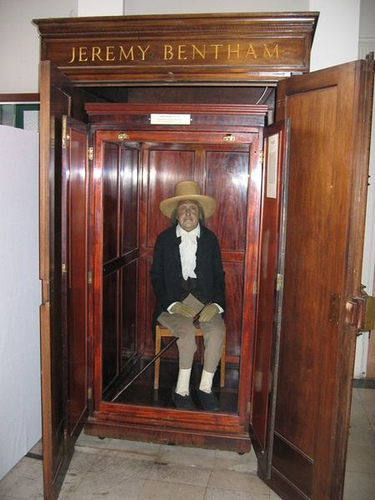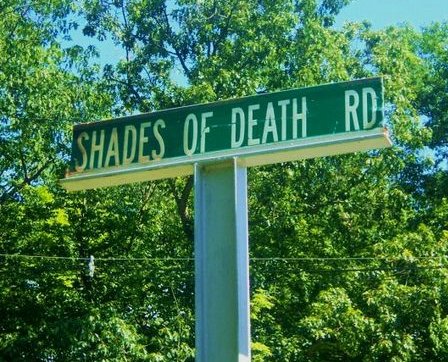C-3PO and R2-D2 are the only characters that survive all six Star Wars movies.
Author: Greg Ross
Fool Me Once
Idaho means nothing. When Congress was casting about for a name for a new western territory, an eccentric lobbyist named George M. Willing suggested “Idaho,” which he said was derived from a Shoshone Indian term meaning “the sun comes from the mountains” or “gem of the mountains.”
He later admitted that he’d made it up.
Law Ghoul

When the English jurist and philosopher Jeremy Bentham died in 1832, his body was preserved and stored in a wooden cabinet at University College London. That was his request. It’s still there — you can see it at the end of the South Cloisters in the college’s main building. Occasionally it’s brought to council meetings, where Bentham is listed as “present but not voting.”
Unfortunately, students kept stealing the head (apparently a disquieting English custom), so the trustees replaced it with a wax one. Bentham’s real head is locked up in an undisclosed location.
Unquote
“Always do sober what you said you’d do drunk. That will teach you to keep your mouth shut.” — Ernest Hemingway
Old Folks’ Homes
Countries with highest life expectancies:
- Andorra: 83.51 years
- San Marino: 81.71 years
- Singapore: 81.71 years
- Japan: 81.25 years
- Sweden: 80.51 years
- Switzerland: 80.51 years
- Australia: 80.50 years
- Iceland: 80.31 years
- Canada: 80.22 years
- Italy: 79.81 years
Location, Location, Location

Sadly, there are no Friendly’s restaurants on Shades of Death Road, which runs for fully 7 miles through Warren County, N.J.
The sign is stolen so frequently that local residents have started greasing the pole. That’s a good trick, but it’s not appropriate everywhere.
“Vibrations of the Air”
If a person stand beneath a railway girder-bridge with an open umbrella over his head, when a train is passing, the vibration of the air will be distinctly felt in the hand which grasps the umbrella, because the outspread surface collects and concentrates the waves into the focus of the handle.
— Barkham Burroughs’ Encyclopaedia of Astounding Facts and Useful Information, 1889
Things to Come
This will be an eventful century, if our science fiction writers are right. Here’s what to expect:
- 2008: Jason Voorhees is captured. (Jason X)
- 2012: Aliens begin to colonize Earth. (The X-Files)
- 2015: Time travelers Marty McFly and Doc Brown arrive from the year 1985. (Back to the Future Part II)
- 2019: Former blade runner Rick Deckard agrees to do one more job. Ben Richards is forced to compete on The Running Man.
- 2022: New York City has become overpopulated, with 40 million starving citizens. (Soylent Green)
- 2035: Mankind lives in gigantic underground cities. (Things to Come)
- 2050: Newspeak eclipses oldspeak. (Nineteen Eighty-Four)
- 2052: New York City launches a giant ball of unwanted garbage into space. Experts warn the ball might return to Earth someday, but their concerns are dismissed as “depressing.” (Futurama)
- 2053: World War III. (Star Trek)
- 2062: The Flintstones arrive via a malfunctioning time machine constructed by Elroy Jetson. (The Jetsons Meet the Flintstones)
- 2063: First contact with Vulcans.
- 2084: Dancing is outlawed. Flash, Strobe, Laser and Pyro escape Earth to live on Moon Base Alpha to dance in freedom. (Dancemania)
Oh, and in the late 21st century Superman leaves Earth. Better hurry and get that autograph.
R.I.P.

“Questions,” an elegy for a departed dog, by William Hurrell Mallock, published in The Dog’s Book of Verse, 1916:
Where are you now, little wandering
Life, that so faithfully dwelt with us,
Played with us, fed with us, felt with us,
Years we grew fonder and fonder in?
You who but yesterday sprang to us,
Are we forever bereft of you?
And is this all that is left of you —
One little grave, and a pang to us?
Incognito
Sean Connery wore a toupee in all the James Bond movies. He started losing his hair at 21.
